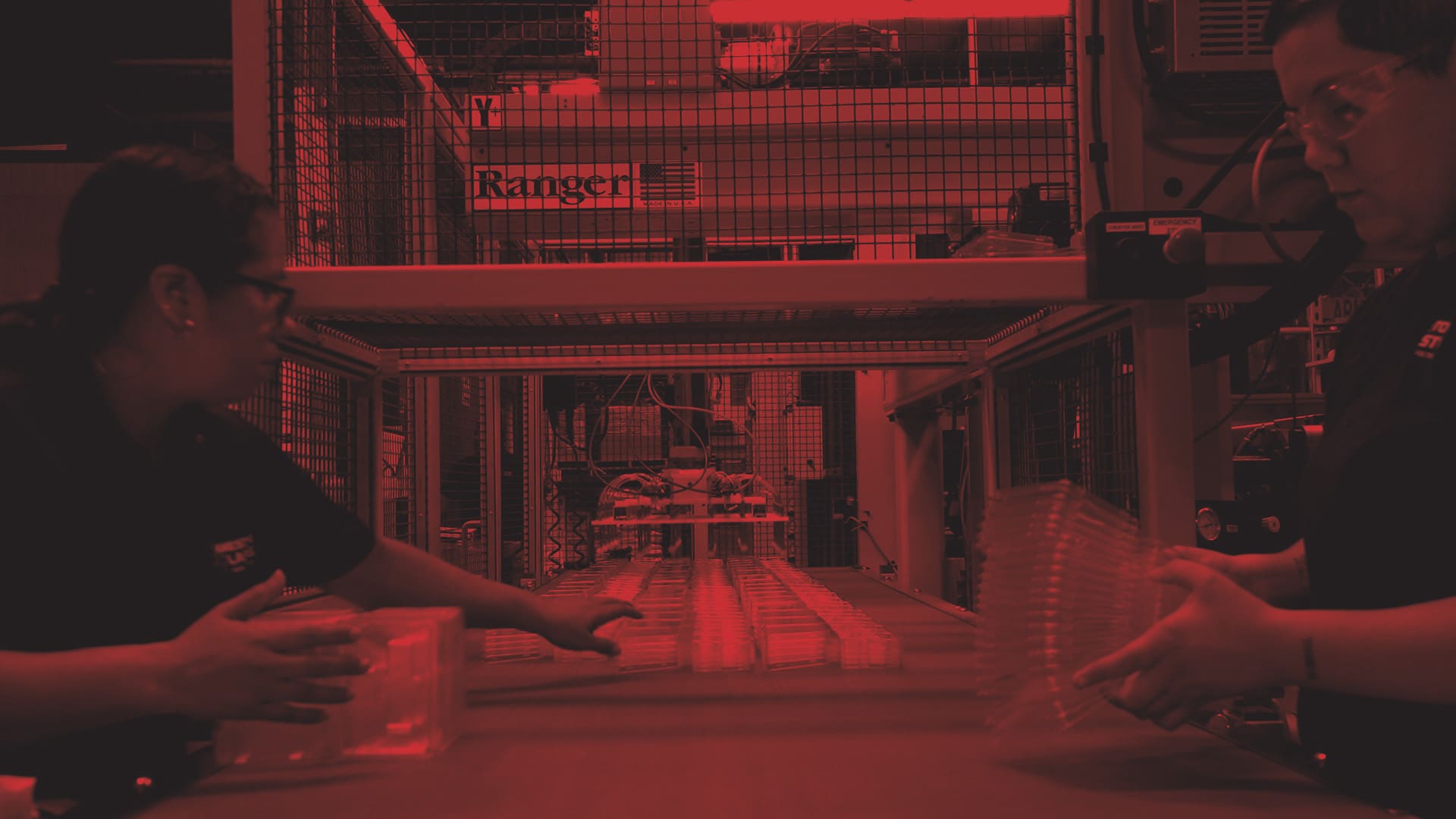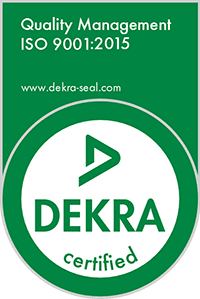What Thermoforming Means in Practice
Thermoforming forms heated plastic sheet over a mold, then trims the shape to final dimensions. Projects may call for thin-gauge packaging or heavy-gauge components; Jamestown Plastics runs both. In-line and cut-sheet equipment handle sizes up to 5′ x 9′ with material gauges from .005″ to .5″+, covering everything from delicate medical trays to durable shrouds and housings. Cleanroom environments (ISO Class 7 and 8) support medical work that requires strict particulate control, while robotic trimming (router, waterjet, and laser) delivers consistent, repeatable edges and apertures.
Thermoforming isn’t a single technique. Engineers choose between vacuum forming and pressure forming based on part detail, strength, and surface requirements:
- Vacuum forming uses suction to draw the heated sheet over the mold.
- Pressure forming adds positive air pressure above the sheet to achieve sharper definition, crisper radii, and molded-in textures.
What Vacuum Forming Does Best
Vacuum forming excels when projects prioritize speed, value, and simpler contours. Tooling typically costs less and lead times can move quickly, which makes vacuum forming a strong fit for high-volume trays, clamshells, and protective packaging. Jamestown Plastics applies vacuum forming across industries: returnable dunnage trays for automotive lines, conductive and ESD packaging for electronics, and retail packaging solutions including our patented Clamtainer® line.
Great packaging doesn’t always require deep draws or heavy textures. Many applications benefit from clear visibility, nestability, and lightweight handling, attributes well served by vacuum forming.
Thermoforming vs. Vacuum Forming: The Practical Differences
Choosing the right process starts with functional requirements. Here’s a clear comparison.
- Forming Force and Detail
-
- Vacuum forming: Uses suction only; best for basic shapes and modest detail.
- Pressure forming (within thermoforming): Adds positive air pressure for higher definition, sharper features, and cosmetic faces.
- Typical Applications
-
- Vacuum forming: Trays, clamshells, insert organizers, and transport packaging.
- Thermoforming (broader): Everything above plus enclosures, structural covers, radomes, and parts that need textured finishes or embossed details.
- Tooling and Timeline
-
- Vacuum forming: Generally lower tooling investment with fast turnarounds.
- Pressure forming: Higher capability comes with more robust tooling and slightly longer build times.
- Material Thickness
-
- Vacuum forming: Commonly thin gauge for packaging; can be used in heavier gauges when geometry allows.
- Heavy-gauge thermoforming: Ideal for durable components and housings up to .5″+.
- Appearance
-
- Vacuum forming: Smooth, clean surfaces suitable for packaging and non-cosmetic faces.
- Pressure forming: Crisp parting lines, tight radii, molded-in texture; often used when the formed face is a visible exterior.
How Jamestown Plastics Guides the Choice
Every project begins with performance goals: part protection, clarity, ergonomics, cosmetic grade, environmental resistance, and target cost. Engineering collaborates with your team to translate those goals into process and material choices. In-house design and tooling allow rapid iteration, while up-front DFM recommendations help reduce weight, improve nesting, and cut freight or storage costs.
Material flexibility matters. Jamestown Plastics runs a wide range of polymers, including PETG, APET/RPET, HIPS, ABS, PC, HDPE/LDPE, PP, conductive, specialty ESD grades, UV-protected options, and recycled or biodegradable selections, so the final part meets real-world demands from cleanrooms to outdoor use. Traceability, process control, and documentation align with ISO 9001:2015 and ISO 13485:2016 certifications.
Examples Across Industries
- Automotive: Returnable trays and custom pallet systems that reduce damage and speed assembly; interior and exterior appliques; heavy-gauge covers and closeout panels for durable in-vehicle use.
- Medical: Cleanroom-formed device and reservoir trays with lot-level records; organization systems that stand up to daily handling.
- Electronics: Conductive and ESD packaging that protects sensitive modules during production, storage, and shipment.
- Consumer Goods: Retail clamshells and insert organizers that balance shelf appeal with reusability and efficient pack-out.
When Vacuum Forming Is the Answer
Projects aimed at high-volume packaging, fast changeovers, and efficient material use often gravitate to vacuum forming. Nesting geometry can be optimized to reduce sheet waste and freight costs. Clear materials help with visual inspection and inventory management. For programs that need repeatable quality on tight timelines, vacuum forming checks the right boxes.
When Pressure Forming Provides More Value
Programs that demand elevated cosmetics, deep draws with crisp definition, or structural performance typically benefit from pressure forming. Enclosures and housings look cleaner with molded-in textures and sharp part definition, creating high-quality finishes that stand out in visible applications.
A Partner for Every Forming Need
Jamestown Plastics has spent more than six decades solving real manufacturing problems with thermoformed plastics. Multiple U.S. locations provide logistical advantages and redundant capacity, while value-add services like contract packaging, assembly, labeling, and drop shipping streamline launch and replenishment. Teams get a single source that can design, tool, form, trim, and package under one roof.
Have a project on the horizon or an existing tray that needs to run leaner? Contact us today to talk through goals, compare options, and choose the right forming process for your application.





